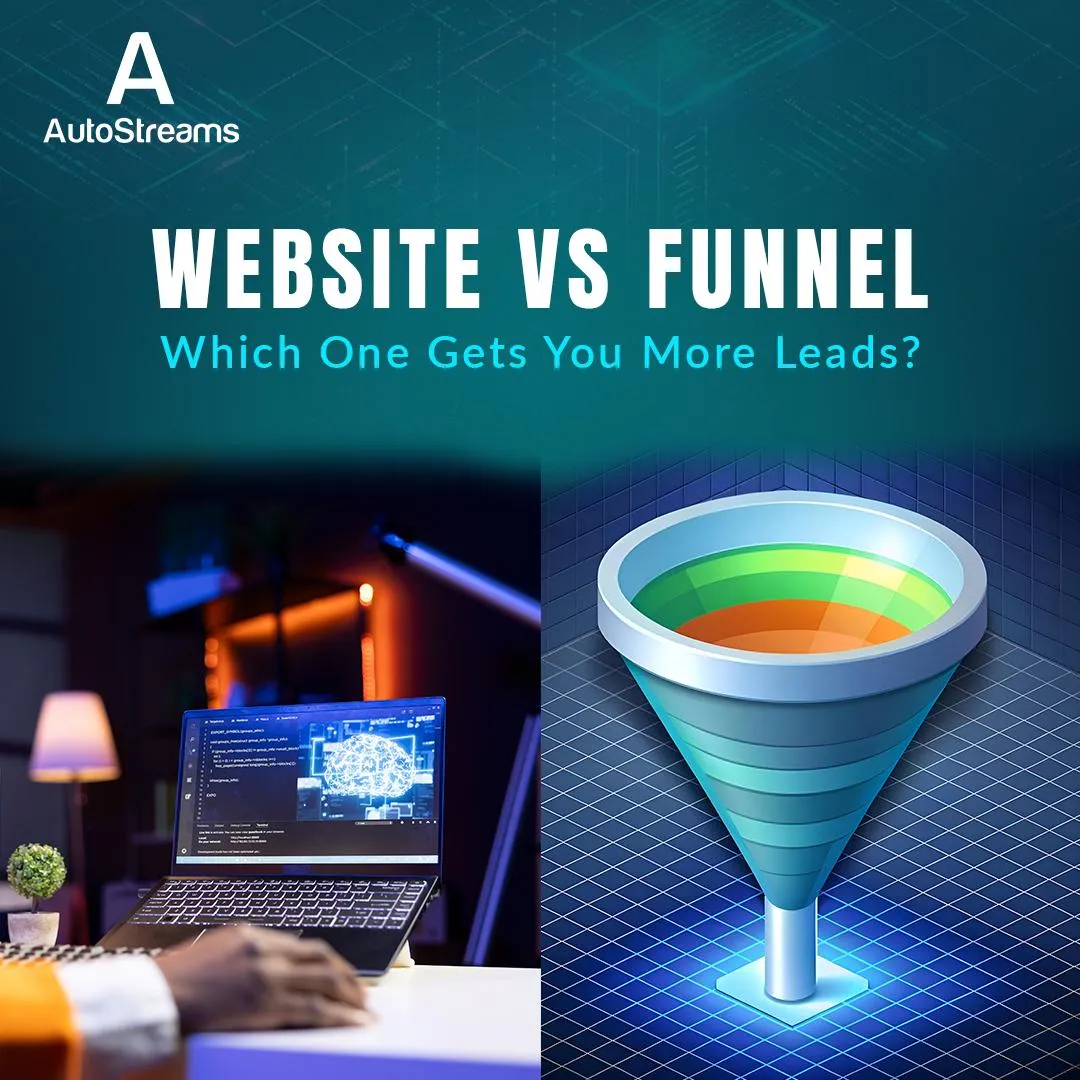
Website vs Funnel: Which One Gets You More Leads?
If you’re getting traffic but not getting leads or sales, the problem may not be your marketing. It could be where you're sending people.
Many small businesses send visitors to a general website and hope for the best. But in most cases, a funnel performs better because it’s built to guide people to take action.
we’ll explain the difference between a website and a funnel, and help you decide which one can bring you better results.
What Is a Website?
A website is like your online business card. It usually has multiple pages like:
Home
About Us
Services or Products
Blog
Contact Us
Websites are great for:
Giving information about your business
Showing your brand personality
Helping people learn more at their own pace
But here’s the problem: Most websites don’t have a clear path for visitors to take. People come to the homepage, click around, and often leave without doing anything important like booking a call or buying something.
What Is a Funnel?
A funnel is a simple, focused webpage (or series of pages) designed to do one thing really well.
That could be:
Getting someone to sign up
Booking a free consultation
Selling a product
Collecting an email in exchange for a free guide
Funnels are clear, direct, and have no distractions. They tell the visitor exactly what to do next—like “Get Started” or “Claim Your Free Trial.”
Why Funnels Often Get More Conversions
Funnels work better for conversions because they remove all the extra noise. There are no menus, no extra links, and no confusion.
Instead of giving people 10 things to choose from, a funnel gives them one clear path.
Here’s how funnels help:
They speak to a specific audience
They offer one strong solution
They make the next step easy to take
This focus can double or even triple your results compared to sending people to a regular website.
Real Life Example
Let’s say you’re running an ad to promote a free consultation.
Option 1: Send them to your website
They land on your homepage. They see links to your blog, team page, services, and social media. They might get distracted and leave.
Option 2: Send them to a funnel page
They land on a simple page that says:
"Book Your Free Consultation. Limited Spots Available."
There’s a short form and a “Book Now” button.
Which one do you think gets more bookings?
The funnel wins every time.
So, Which One Do You Need?
If your goal is to build trust and let people learn more about your business, a website is helpful.
But if your goal is to get leads, sales, or sign-ups quickly, a funnel is the better choice.
Truth is, most businesses need both:
Use your website for general info and branding
Use funnels for ads, promotions, or launching offers
If you’re just starting or running a small team, building a funnel first can help you grow faster without hiring more people.
How to Build a Funnel That Works
You don’t need to be a tech expert. Start small.
Here’s what you need in a basic funnel:
A clear headline – Tell people what they’ll get
Short and focused text – Explain the benefit quickly
One call-to-action – Like “Get Your Free Trial” or “Book a Call”
Simple design – No menu bars or extra links
Proof – Add a testimonial, review, or result if possible
If you’re spending money on ads or putting effort into marketing, sending people to the wrong page could mean lost leads and wasted time.
At autostreams.co, we help small businesses build smart, automated funnels that turn clicks into customers without needing a big team.
Want better conversions and more leads? Let’s build your funnel.
Visit autostreams.co to get started.
#MarketingTips #SmallBusiness #DigitalMarketing #BusinessGrowth #MarketingStrategy #OnlineBusiness #SalesFunnel #MarketingFunnel #FunnelBuilder #FunnelStrategy #ConvertMore #LeadGeneration #ConversionRateOptimization #ClickFunnels #HighConvertingFunnels #MarketingAutomation #BusinessAutomation #WorkSmarter #AutomationTools #CRMMarketing #Autostreams #AutostreamsCRM #AutostreamsFunnels #AutomateWithAutostreams
